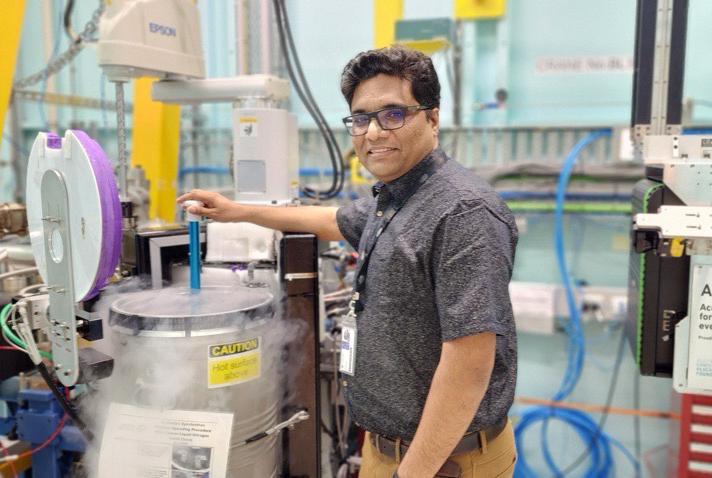The protein mapping workhorses of the Australian Synchrotron, Macromolecular and Microfocus crystallography beamlines, MX1 and 2, continue to support important biomedical research in the development of vaccines and new therapeutics.
The latest publication from University of La Trobe malaria researchers highlights favourable results with a molecule that could inhibit the ability of malaria parasites to infect cells at different stages of the disease.
The research team led by Professor Michael Foley, Professor Robin Anders and PhD candidate Dimuthu Angage of the La Trobe Institute for Molecular Science showed that the molecule can protect against several different malaria parasite species and was reported in Nature Communications.
In this research featured on the La Trobe University website, they reported that the molecule )WD34 bound with a protein known as AMA1, which is common to many malaria parasite species and is one of two proteins that play a critical role in infection.
"We urgently need broader therapeutic options to combat drug resistance and treatment failures, and this discovery provides some hope for the development of a treatment for all malaria parasite species," said lead author Professor Michael Foley of La Trobe University in a report on the university website.
AMA1 is a key protein target in malaria vaccines. It helps the malaria parasite invade human and mosquito cells by forming tight junctions with another protein complex. However, AMA1 has many surface variations, which means vaccines based on it only protect against specific strains of malaria.
La Trobe University researchers have identified a new molecule, an i-body, which is similar to a human antibody. This i-body can recognise a common part of AMA1 found in all malaria. The i-body, known as WD34, binds strongly to AMA1 and blocks the parasite from invading red blood cells and liver cells.
The MX2 beamline was used to determine the structure of the WD34-AMA1 complexes.
"MX2, with its intense microfocus beam and highly sensitive ACRF-funded detector, is ideal for weakly-diffracting, hard-to-crystallise proteins, viruses, protein assemblies and nucleic acids, such as the protein complexes investigated in this study", said Principal beamline scientist Dr Rachel Williamson.

"These strengths of MX2 underpin the discovery, allowing the research team to observe the molecular basis for WD34's inhibition of AMA1 and its potential to block infection across multiple malaria species", said beamline scientist Dr Yogesh Khandokar. (Pictured above)
Preliminary preclinical tests indicated malaria infection was reduced temporarily.
The team suggested that WD34 could be improved to become a potential treatment for various types of malaria.
Collaborators included the University of Adelaide, Walter and Eliza Hall Institute of Medical Research, and the University of Melbourne.
According to the NHMRC, malaria remains a global health priority. According to the latest World malaria report 2020, there were 229 million cases of malaria in 2019. Children under 5 years of age are the most vulnerable group affected by malaria; in 2019 they accounted for 67 per cent of all malaria deaths worldwide.
Malaria has historically been endemic in Australia but was declared eradicated from the country in 1981. Although it is no longer endemic, approximately 700-800 cases occur each year in Australia in travellers who have been infected elsewhere (according to the Victorian Department of Health).






